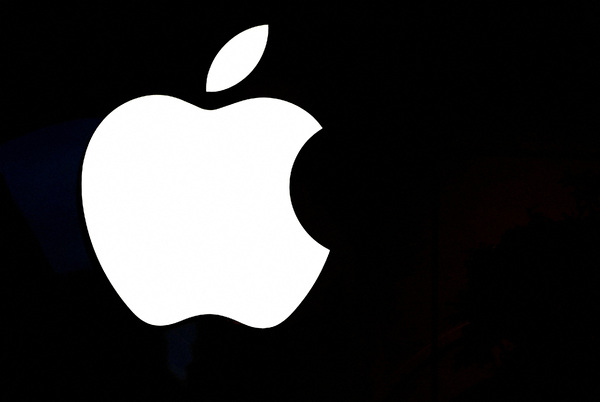How content lays the foundation for the modern customer experience
Sponsored by Contentful
Digital-fast brands turn to scalable content strategies to meet modern customer expectations.
The customer experience is now digital. Today, 58 per cent of customer interactions around the world are digital, according to a report from McKinsey & Company. This tells businesses that digital transformation isn’t just coming – it’s already happened.
The digitised world has changed two fundamental elements of the customer experience: speed and proximity. As Contentful CEO, Steve Sloan, puts it, “The distance between customer and brand has been reduced to a matter of pixels, and immediacy is the only timeframe customers are willing to accept.”
In this modern marketplace, the challenge for all businesses – century-old heritage brands and direct-to-consumer disruptors alike – is translating the dynamic experiences customers appreciate from in-person interactions into the pace and proximity they expect from digital. This digital-first and digital-fast environment has positioned content as the foundation of the customer experience.
Content is the way brands package up their stories to educate, inform and inspire. Content is also how brands deliver experiences across all the digital channels, devices and environments customers now frequent.
The question brands are asking is not what, but how?
Scalable content powers the modern customer experience
In-person customer interactions enforce a predictable pace for commerce. There are literal front doors and sales representatives to manage and respond to customer needs. The digital world, on the other hand, has many entry points: mobile devices, apps, smart speakers, digital kiosks, wearables and a slew of emerging technologies. To keep up with this demand for content distribution, brands have relied on traditional content delivery strategies like legacy content management systems (CMS), product information management systems (PIM) or digital asset management systems (DAM).
Traditional delivery strategies have been an effective stopgap for companies trying to push content out across a finite number of channels such as websites and apps. However, as digital customer touchpoints proliferate, these vertical-focused solutions now create siloes that trap content within different management systems and force digital teams to rely on manual copy and pasting efforts to reuse their content.
The second challenge of single-purpose solutions, like monolithic CMSs, is rigidity. Monolithic systems can be described as opinionated technology that forces businesses to create digital solutions reflecting the tool rather than the customer. When faced with digital customers’ new demand for customisable experiences, monolithic solutions start to show their fragility.
For years, siloed content and fragile monolithic solutions have been accepted as the reality for businesses operating in the digital era. However, leading brands are now turning to content platforms such as Contentful that offer flexibility and scalability through an API-first approach. An API (application programming interface) allows devices to communicate directly with each other, going from human to machine scale. With an API-first approach, content platforms remove internal content siloes by emphasising, not restricting, the integration of content across a brand’s tech stack. This gives brands the freedom to develop the best content experience for their customers today and evolve their strategies by integrating new tools in the future.
Taking an API-first approach to content allows brands to embed their content management and delivery into whichever technology stack they prefer, meaning they aren’t tied to any one particular system or solution. This ensures digital experiences are tailored to business and customer needs rather than technological capabilities. By adopting a platform approach to content, leading businesses are using content as the foundation for customised customer experiences that don’t drain internal time and resources.
What does scalable content management look like?
In response to customer demand for video doctor appointments due to COVID-19, Livi, a medical app owned by healthcare company Kry International AB, launched a global telehealth product in just four weeks. To deliver on this experience, Livi needed to build out a country-specific website for each of its markets, comply with local regulations and deliver services in the appropriate language while keeping its brand identity consistent across all channels.
To deliver on the speed and scale of this project, Livi used Contentful’s content platform. Contentful’s modular content system allowed Livi developers to build the technological capabilities necessary to deliver the new telehealth services reliably, while also enabling content creators to update and publish medical information across the services swiftly. Contentful’s API-first approach then allowed the Livi team to integrate their site with a translation and localisation tool, making it possible to launch the service in 10 languages in just four weeks.
In the world of retail, Matches Fashion, a well-established curator of luxury men’s and women’s clothing and home goods, shows how a brand that once relied on in-person interaction is now delivering engaging digital experiences to its customers. The company originally started more than 30 years ago as a brick-and-mortar business, but today is driving 95 per cent of its revenue from online sales.
This move to digital involves shipping products to customers in 176 different countries, processing different currencies across regions and maintaining websites and apps in four different languages.
To keep pace with the content demands at each of these new digital customer touchpoints, Matches Fashion used Contentful’s content platform to reduce the marketing team’s reliance on their technical colleagues while still delivering the customised experiences their customers expected. To support the need for fresh and relevant content, the engineering team designed a host of content models, including homepages, articles and campaign banners, that integrated across the business’ expanding digital channels. With these content models in place, the marketing team was able to edit and publish content autonomously whenever it needed to.
According to Matches Fashion’s trading and campaigns manager, “Contentful has been game-changing... it has allowed us to be more flexible and reactive than ever before with our marketing content and has streamlined processes for multiple teams across the business.”
Brands across every industry are learning how to use a platform-first approach to deliver engaging digital customer experiences. Learn more in Forrester’s report on customising experiences at scale
Paul Biggs is Director of Product Marketing at Contentful.
Nick Scheffer
Related Articles
Most Viewed
23-29 Hendon Lane, London, N3 1RT
23-29 Hendon Lane, London, N3 1RT
020 8349 4363
© 2024, Lyonsdown Limited. Business Reporter® is a registered trademark of Lyonsdown Ltd. VAT registration number: 830519543
Join the Business Reporter community today and get access to all our newsletters, and our full library of talk show episodes
Join the Business Reporter community today and get access to all our newsletters, and our full library of talk show episodes





